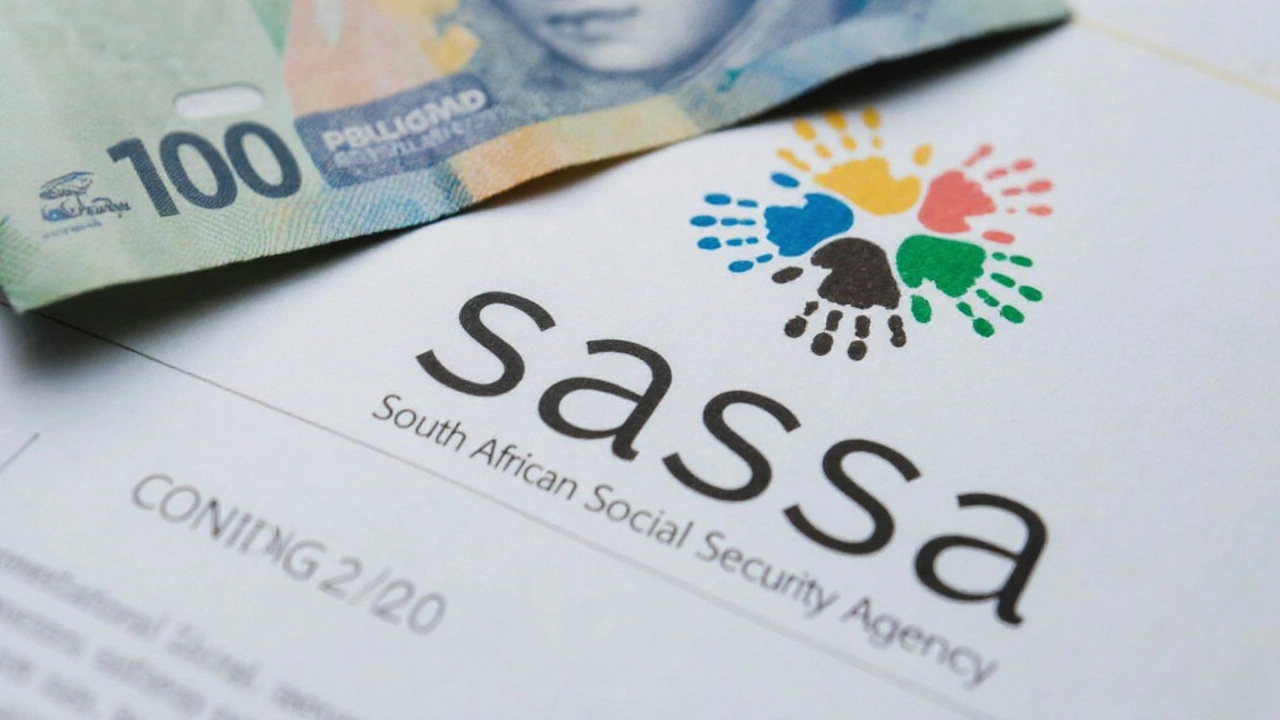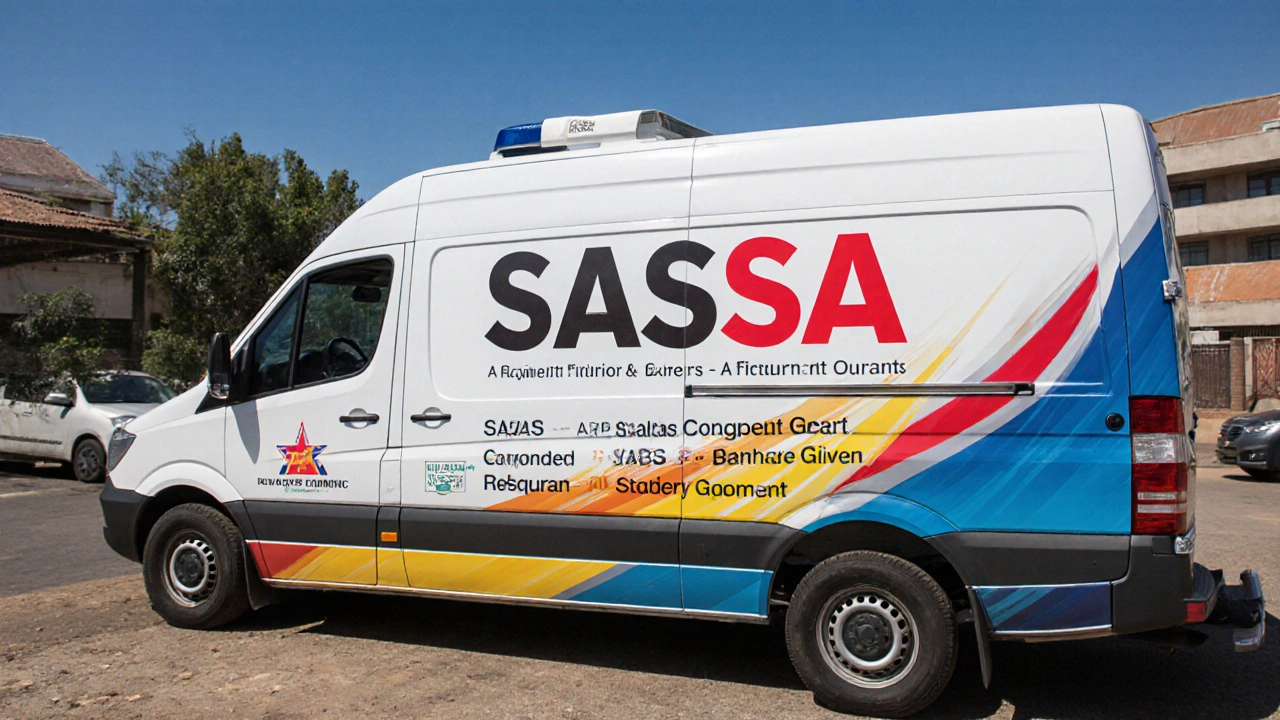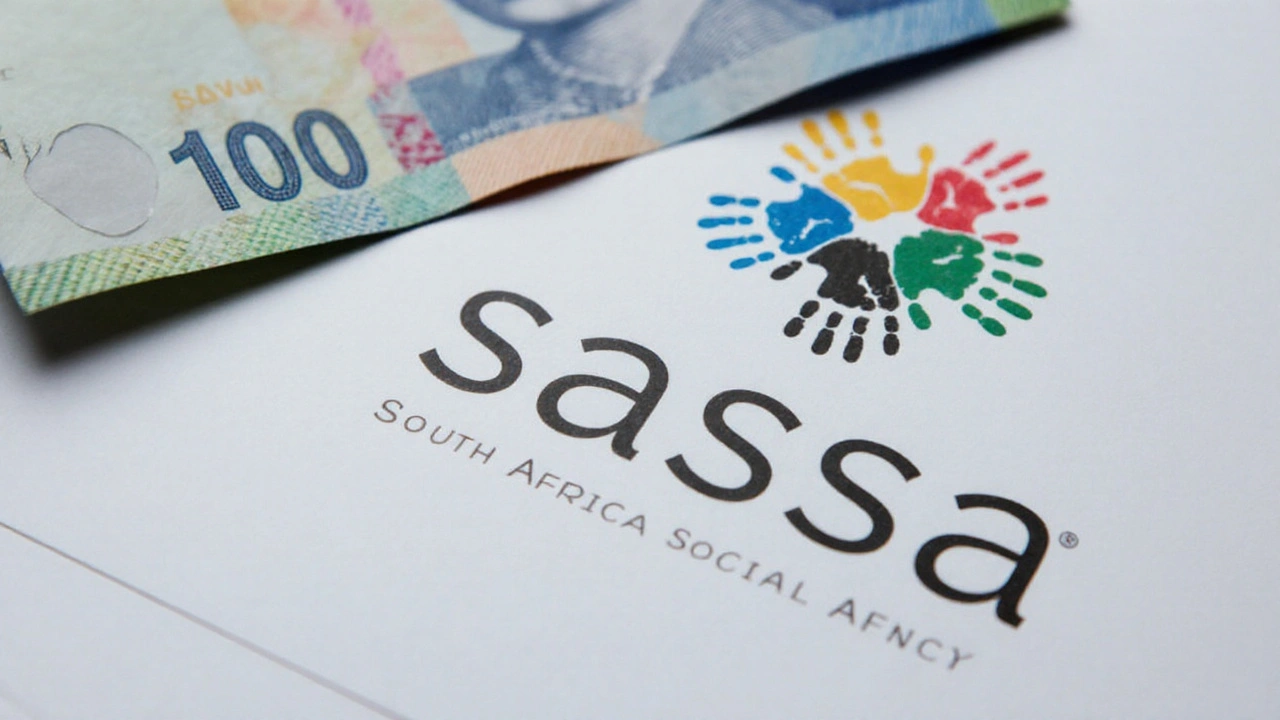Why an Appeal Is the Right Move
When a South African Social Security Agency (SASSA) application for the R370 Social Relief of Distress (SRD) grant is turned down, the instinctive reaction is often to submit a fresh request. SASSA, however, stresses that a fresh application does not reset the review process and can delay urgent aid. Instead, the agency has set up a dedicated appeals system that lets claimants challenge a decision without starting over. This approach saves time, reduces paperwork, and gives the Independent Tribunal for Social Assistance Appeals (ITSAA) a chance to correct any administrative slip‑ups.

Step‑by‑Step: Filing Your SRD Grant Appeal
SRD grant applicants start by visiting the official SASSA appeals portal. The site asks for two pieces of information you already entered when you first applied: your South African ID number and the mobile number you used during the original submission.
- Enter your ID and phone number. Double‑check for typos; a single digit error can lock you out.
- Click the "Send Pin" button. Within minutes you’ll receive an SMS containing a verification code.
- Input the PIN on the portal and press "Submit" to gain access to the appeal dashboard.
Once inside, you’ll need to pick the specific month you’re contesting – SASSA processes SRD grants month by month, so selecting the correct period is essential. Next, choose the reason that best matches your situation from the dropdown list. Common reasons include "incorrect income assessment," "documentation not received," or "technical error in the system."
Supporting evidence is the keystone of a successful appeal. Gather any documents that prove your eligibility for that month: recent payslips, proof of unemployment, bank statements, or a copy of your national ID. Attach scanned copies or clear photos directly in the portal – make sure the files are legible, otherwise the ITSAA may dismiss the appeal for lack of proof.
After you submit, the appeal is logged and routed to the Independent Tribunal for Social Assistance Appeals (ITSAA). This independent body reviews each case impartially, checking both the applicant’s evidence and SASSA’s original decision. The law gives the tribunal a window of 30 to 90 days from the date of SASSA’s denial to render a judgment.

What Happens Next?
If the ITSAA finds merit in your claim, you’ll receive an SMS confirming the reversal and the grant amount will be credited to your account within a few business days. Keep the message as proof; it’s the official notification of a successful appeal.
Sometimes, the tribunal may uphold the original denial. In that case, you have two options. First, you can log back onto the same appeals site and use the "Track Appeal" feature – re‑enter your ID and phone number to see the detailed status. If no response appears after 90 days, it’s a signal that the process has stalled, and you may consider escalating the matter.
Legal recourse is available through a judicial review in the High Court. This step is usually reserved for cases where there’s clear evidence of procedural unfairness or where the tribunal’s reasoning is flawed. SASSA advises beneficiaries to pursue this route only after exhausting the ITSAA process, as court proceedings can be lengthy and costly.
Overall, the appeals pathway is the agency’s recommended remedy for denied SRD grants. By following the online steps, providing thorough documentation, and tracking the status diligently, claimants can maximize their chances of receiving the emergency assistance they need without unnecessary delays.






19 Comments
Aaron Leclaire
September 26, 2025 AT 22:33 PMJust submit the appeal. Done.
Kelly Ellzey
September 28, 2025 AT 11:35 AMHonestly? This is the kind of system that makes you believe in humanity again. You don’t need a lawyer, you don’t need to beg, you just need your ID and a phone that works. I know people who’ve been through this and came out with their grant restored-no drama, no crying, just facts and files. It’s not perfect, but it’s a damn sight better than what most countries offer. If you’re reading this and you got denied, don’t give up. You’ve got a shot. And if you need help filling out the form? I’ll walk you through it. No judgment. We’ve all been there.
Ashley Hasselman
September 29, 2025 AT 21:41 PMOh wow. A government agency that actually has a functional appeals process? Must be a typo. Next they’ll tell us the post office delivers mail on time.
ria ariyani
September 30, 2025 AT 23:32 PMThis is just another trap... they want you to think you’re being heard, but the ITSAA is just SASSA in a fancy suit. They’ve been doing this for years-deny, then pretend to review. The real answer? They’re running out of money and they don’t care if you starve. I’ve seen 3 people get approved after 90 days... and all 3 were already dead by then.
Zara Lawrence
October 1, 2025 AT 00:34 AMThe notion that an online portal constitutes 'due process' is laughable. One must consider the structural inequities: 40% of applicants lack consistent internet access, let alone the digital literacy to navigate bureaucratic interfaces. Furthermore, the reliance on SMS verification excludes those without mobile service-often the very demographic in need. This is performative governance dressed as reform.
Lewis Hardy
October 2, 2025 AT 02:55 AMI know someone who got denied because SASSA said her income was too high... but she’s been unemployed since 2020. She uploaded her bank statement showing zero deposits, her unemployment letter, and even a letter from her pastor confirming she lives off donations. Took 78 days. Got approved. The system works if you fight. Don’t let the trolls scare you off.
Mark Venema
October 3, 2025 AT 19:25 PMThe procedural clarity outlined here is commendable. The integration of a third-party tribunal-ITSAA-ensures an independent review, which is a critical safeguard against administrative overreach. The requirement for documented evidence aligns with international best practices in social assistance appeals. One minor suggestion: SASSA should provide a downloadable checklist in PDF format for applicants to prepare materials offline. This would significantly reduce submission errors.
Emily Nguyen
October 4, 2025 AT 20:19 PMLet’s be real-this isn’t about fairness. It’s about optics. SASSA got slammed in the press for denying people during the pandemic, so now they’ve built this shiny portal to look like they care. Meanwhile, the actual disbursements are still delayed by months. The appeal works? Sure. But only if you’re lucky enough to have a working phone, a decent scanner, and a day off to sit in front of a computer. Most of us don’t.
Steven Rodriguez
October 5, 2025 AT 10:52 AMThis is why America doesn’t have welfare systems like this. We don’t waste time with appeals-we just cut checks and move on. You want help? You get it. No forms. No PINs. No waiting 90 days for a bureaucrat to decide if you’re worthy. This is what happens when you let paperwork become policy. South Africa needs to simplify, not complicate.
Steve Cox
October 5, 2025 AT 18:25 PMI tried this last year. Sent in everything. Got a reply that said 'insufficient documentation.' I called SASSA. They told me to 'check my email.' I didn’t even get an email. I had to go to a center in person. They said my file was 'lost.' I had to reapply. So yeah, this guide? It’s a fairy tale.
Mitch Roberts
October 5, 2025 AT 22:37 PMYo I just wanna say-this worked for me. I was skeptical too. But I did the whole thing: ID, phone, pin, uploaded my payslips from 3 months ago (even though I was unemployed), picked 'technical error' because I had no clue what else to pick-and boom. 45 days later, R370 hit my account. No drama. No shouting. Just follow the steps. And if you’re scared? Print this guide. Take it to a library. Ask someone to help you. You got this.
jesse pinlac
October 7, 2025 AT 02:10 AMThe entire premise of this appeal mechanism is predicated upon a false dichotomy: that the state is an impartial arbiter rather than a self-referential apparatus of control. The ITSAA, though nominally independent, operates under the fiscal and administrative umbra of SASSA. To suggest that submitting scanned documents constitutes 'due process' is to ignore the epistemological violence inherent in bureaucratic systems that demand proof from those systematically dispossessed of documentation. This is not reform-it is neoliberal containment.
Elizabeth Price
October 7, 2025 AT 22:54 PMWait, you're telling me you just... upload stuff? And then they... review it? And then they... pay you? That's not how government works. This sounds like a scam. Who's paying for this? Who's behind it? Are they collecting biometric data? Are they tracking your phone? This is too easy. It's a trap.
Ronda Onstad
October 9, 2025 AT 15:20 PMI’ve helped three friends through this process, and honestly? The hardest part isn’t the portal-it’s getting them to believe they deserve it. So many people think if they got denied once, they’re not worthy. But that’s not true. You’re not broken because a system made a mistake. You’re just stuck in a broken system. And this appeal? It’s your tool. Use it. Take your time. Gather your papers. Don’t rush. I sat with one friend for two hours just helping her take clear photos of her ID and unemployment letter. She cried when she got approved. Not because she got money-but because someone finally listened.
Jess Bryan
October 10, 2025 AT 16:57 PMThis is all a lie. The PIN system? It’s a tracker. The portal logs your IP, your device ID, your location. They’re building a database of every poor person who asks for help. Next thing you know, you’ll be flagged for 'high-risk behavior' and denied loans, jobs, even housing. Don’t fall for it. If you need help, go to a church. Or a neighbor. Don’t give the government your digital footprint.
Prakash.s Peter
October 12, 2025 AT 07:25 AMThe process is logically sound but operationally naive. The assumption that all claimants possess a functional mobile device with SMS capability ignores the rural-urban digital divide. Furthermore, the reliance on scanned documentation presumes access to scanners, printers, and stable electricity-luxuries unavailable to 63% of the target demographic. The ITSAA’s 30–90 day window is legally defensible but morally indefensible when starvation is imminent. This is not a solution-it is a bureaucratic mirage.
Joshua Gucilatar
October 13, 2025 AT 09:07 AMThe prose here is remarkably precise, and the structure is admirably logical. That said, the term 'technical error' as a dropdown option is semantically vacuous-it lacks epistemic specificity. A more rigorous taxonomy would differentiate between 'data transmission failure,' 'algorithmic misclassification,' and 'manual input omission.' Furthermore, the use of 'SASSA' without first spelling out 'South African Social Security Agency' is a violation of journalistic convention, even in informal contexts. Precision matters.
Derrek Wortham
October 13, 2025 AT 17:41 PMI spent 3 hours on this portal. Uploaded everything. Got denied again. Now they want me to go to court? I work two jobs. I have three kids. I don’t have time for this. You know what I did? I stopped asking. I started stealing food. At least that works.
Lewis Hardy
October 14, 2025 AT 04:34 AMI saw your comment. I’m sorry you’re going through that. If you ever want someone to help you file again-just message me. I’ll walk you through it step by step. No rush. No judgment. You’re not alone.